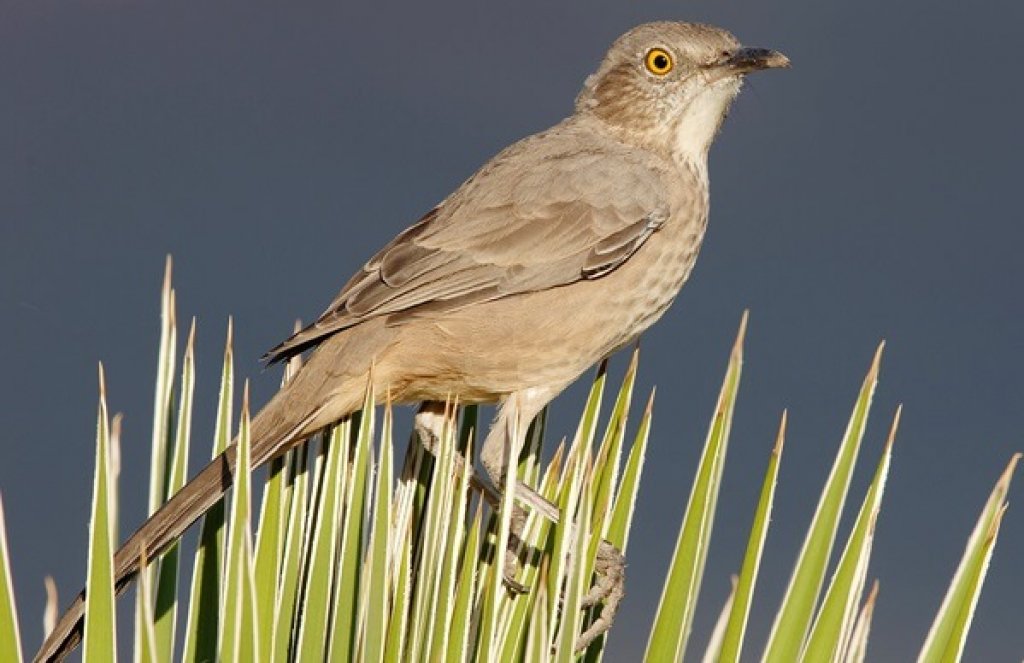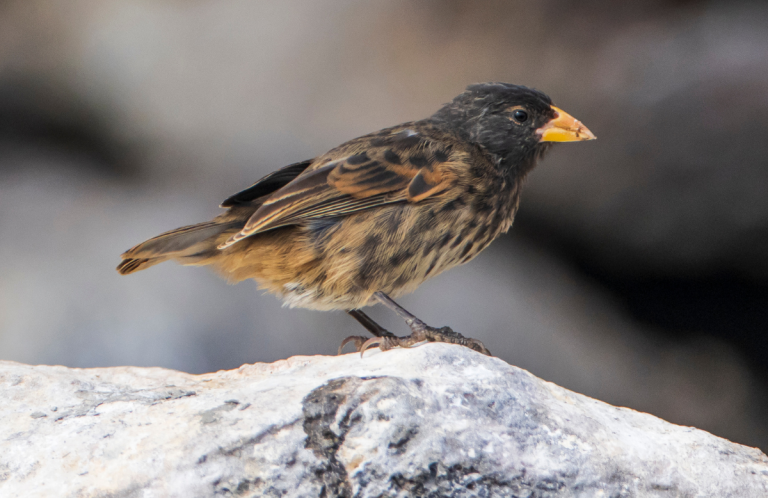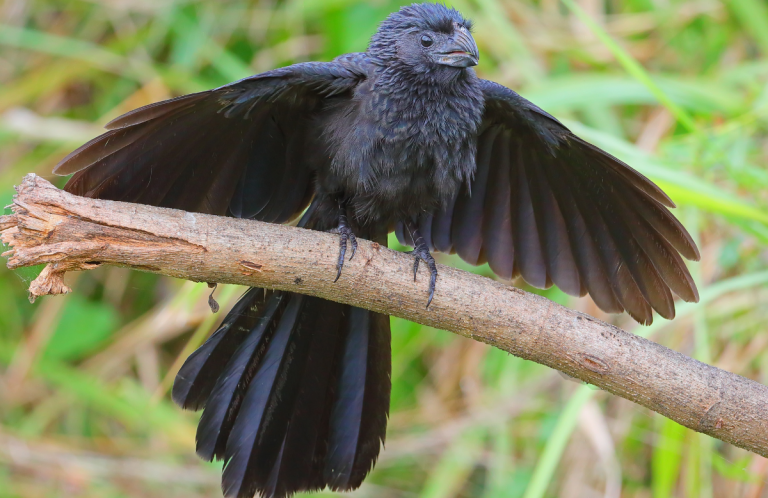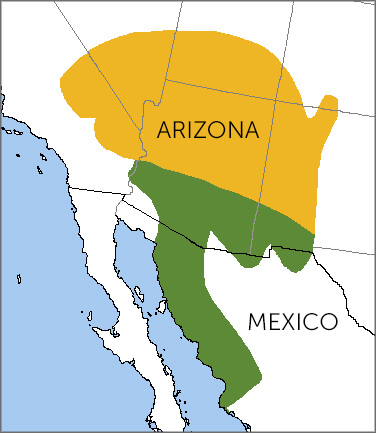
Bendire's Thrasher range map, NatureServe
The subtly colored Bendire's Thrasher was not recognized as a species until 1872, when U.S. Army Lieutenant Charles Bendire collected a bird he didn't recognize during a desert hike. Bendire, an amateur naturalist, sent the specimen to Elliot Coues, an eminent ornithologist at the Smithsonian Institution in Washington, D.C. Coues carefully studied the unfamiliar bird and classified it as a new species, naming it in honor of Bendire.
The arid Sonoran Desert region is home to most Bendire's Thrashers. The species occupies year-round habitat in the extreme southwestern U.S. and Mexico, although some of the birds fly a short distance north to breed. Bendire's is often found in association with other southwestern "specialty" species such as Costa's Hummingbird, Elf Owl, and Lucy's Warbler.
Close Companions
Rivers crossing these dry lands are lined with forests of cottonwood, willow, and sycamore that shelter other range-limited birds such as Southwestern Willow Flycatcher. Threats such as habitat loss and persistent drought caused by climate change affect these species, along with Scaled Quail, Black-throated Sparrow, and Varied Bunting.
Subtle but Separate
Bendire's Thrasher is often out-competed by its close relative, the Curve-billed Thrasher, where the two species' habitats intersect in Arizona and New Mexico. The species look similar and share many of the same habitats. Notable differences include Bendire's Thrasher's smaller size; shorter, straighter beak; and tendency to frequent more open desert areas. Their behavior is also distinctive: Bendire's Thrashers take to the air more often than other western thrashers, which tend toward terrestrial habits.
Song of Bendire's Thrasher
The song of this thrasher tends to build from short whistles to a jumbled warble. Most phrases are repeated, but because of the slurred quality of the song, it can be difficult to pick out individual phrases.
Sign up for ABC's eNews to learn how you can help protect birds
Desert Digger
Like Sage Thrasher and others in its family, Bendire's forages in a unique style, noisily "thrashing" through desert groundcovers in search of insects, its main food. This bird will also use its strong bill to dig for ants, beetles, and grasshoppers; seeds, berries, and cactus fruits supplement its diet.
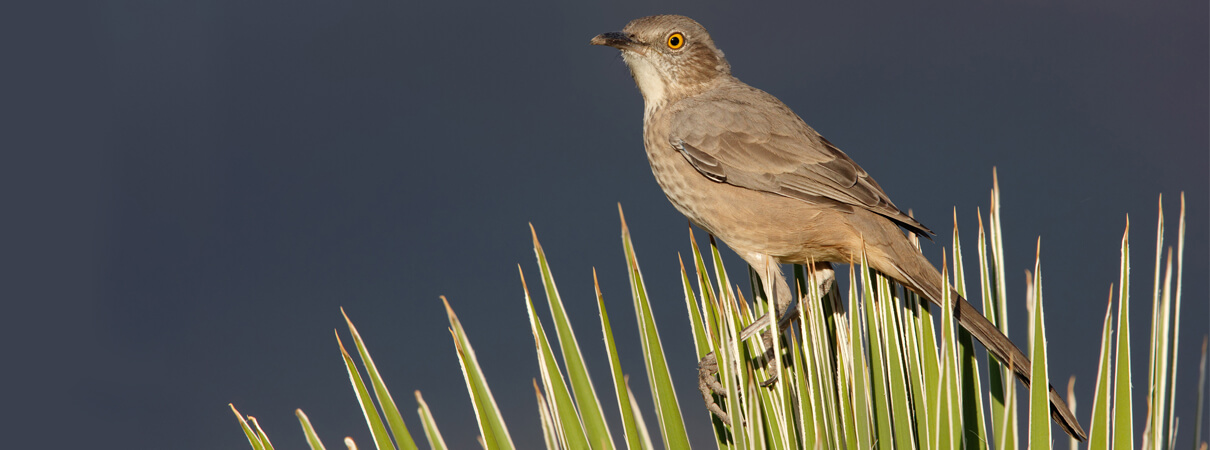
Bendire's Thrasher by Jacob Spendelow, www.tringa.org
Conservation Across Landscapes
American Bird Conservancy works with a number of coalitions to conserve and manage habitat for birds. The North American Bird Conservation Initiative (NABCI), formed in 1998 with ABC input, has identified Bendire's Thrasher as one of the fastest-declining species of arid habitats, along with the closely related LeConte's Thrasher.
Partners in Flight (PIF) includes Bendire's Thrasher on its Watch List, as its population has declined steeply — 90 percent over the past 40 years. Without increased conservation effort, the species is projected to lose an additional 50 percent of its current population within the next 40 years.
ABC is taking action to save the habitats of priority birds such as Bendire's Thrasher through our BirdScapes approach to bird conservation. Our work to re-establish riparian areas for the western population of Yellow-billed Cuckoo will eventually lead to additional suitable bird habitat.
Donate to support ABC's conservation mission!





































